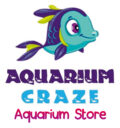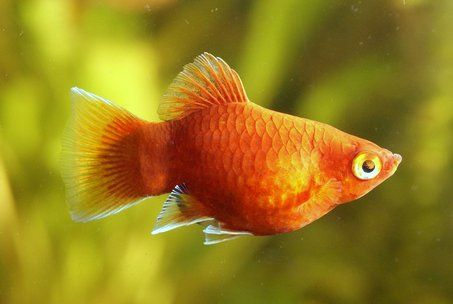Dropsy Fish Treatment: A Comprehensive Guide
Introduction
Dropsy is a term that refers to the swelling of a fish’s body caused by the accumulation of fluids in the tissues. It is a condition that can affect both freshwater and saltwater species. Dropsy is not a disease in itself but rather a symptom of an underlying issue, often a bacterial infection, organ failure, or poor water quality. This guide will explore the causes, symptoms, and treatment options for dropsy in fish, along with essential tips to help maintain a healthy aquarium and prevent further outbreaks.
What is Dropsy in Fish?
Dropsy is a condition where a fish’s body swells due to fluid buildup beneath the skin and in the abdominal cavity. The condition typically presents itself with symptoms like a bloated or distended abdomen, protruding scales, lethargy, loss of appetite, and in some cases, a noticeable change in behavior. While dropsy may be associated with various underlying causes, it is often considered a severe sign that the fish’s organs are malfunctioning.
The most common signs of dropsy in fish include:
- Swelling or bloating of the abdomen.
- Protruding scales, often referred to as “pinecone” scales.
- Lethargy or a lack of movement.
- Loss of appetite or disinterest in food.
- Abnormal swimming behavior, such as floating at the surface or sinking to the bottom.
- Color changes or faded coloration.
Causes of Dropsy in Fish
Dropsy itself is not a disease but a symptom of an underlying problem, and several factors can contribute to the development of this condition. Understanding the causes of dropsy can help you identify the correct treatment plan for affected fish.
- Bacterial Infections
One of the leading causes of dropsy is a bacterial infection, often caused by Aeromonas or Vibrio species. These bacteria invade the fish’s body, particularly the internal organs, and lead to fluid retention and swelling. - Organ Failure
Dropsy is often a result of liver or kidney failure. These organs are responsible for filtering and removing excess fluid from the fish’s body. When they are compromised, fluid accumulates and causes the swelling associated with dropsy. - Poor Water Quality
Water quality is a critical factor in maintaining healthy fish. High levels of ammonia, nitrites, and nitrates can weaken a fish’s immune system, making it more susceptible to infections. Poor water conditions, such as low oxygen levels and improper pH, can also contribute to dropsy. - Parasites
External or internal parasites may contribute to dropsy by causing stress and weakening the immune system of the fish. This can create an environment where bacterial infections take hold. - Stress and Overcrowding
Overcrowding in an aquarium leads to increased stress on fish. Stress can lower the fish’s immune response, making it easier for bacteria and other pathogens to invade. Overcrowded tanks can also lead to poor water circulation, which worsens water quality. - Nutritional Deficiencies
Poor diet and improper nutrition can weaken a fish’s immune system and make it more vulnerable to infections. Deficiencies in vitamins, minerals, and fatty acids may contribute to the development of dropsy.
Dropsy Fish Treatment
Accurately diagnosing dropsy is essential for determining the correct course of treatment. A veterinarian or aquatic specialist will typically conduct a thorough examination, which may include:
- Observing the physical symptoms of the fish.
- Testing water parameters such as pH, ammonia, nitrite, and nitrate levels.
- Performing a biopsy or necropsy (postmortem examination) if the fish has died.
Additionally, your veterinarian may recommend tests for bacterial infections, parasites, or organ damage to confirm the underlying cause of dropsy.
Treatment Options for Dropsy in Fish
Treatment for dropsy can be complex because it depends on the underlying cause. While there is no single cure for dropsy, early detection and prompt intervention can significantly improve the chances of recovery.
- Isolate the Affected Fish
To prevent the spread of infection to other fish, it’s crucial to isolate the affected fish in a quarantine tank. This tank should have optimal water conditions, including appropriate temperature, pH, and salinity levels. - Improve Water Quality
Maintaining clean and stable water conditions is one of the most important aspects of preventing and treating dropsy. Perform water changes regularly to ensure proper filtration and reduce toxins. Use a high-quality water testing kit to monitor water parameters and keep them within the ideal range for your fish species. - Antibiotic Treatment : API Pimafix Anti-fungal Fish Remedy
If a bacterial infection is suspected, antibiotics are often used to treat dropsy. Common antibiotics for fish include Maracyn (a general antibiotic) and Kanamycin (effective for Gram-negative bacteria). These treatments may be administered via the aquarium water or as a medicated food. - Anti-Parasitic Treatment: AquaNature Paracure Parasite,Skin & Gill flukes Cure for Freshwater Aquarium Fishes
If parasites are suspected to be the cause of dropsy, anti-parasitic treatments should be used. Products like CopperSafe or PraziPro are effective in treating both internal and external parasites. It’s essential to follow the manufacturer’s instructions carefully when applying these treatments. - Epsom Salt Baths: Aqua nature Aquarium Salt for Fresh Water Aquaria
Epsom salt (magnesium sulfate) is often recommended for treating dropsy. It can help draw out excess fluids from the fish’s body and reduce swelling. An Epsom salt bath can be used for short periods to relieve the swelling, although it may not cure the underlying cause. - Anti-inflammatory Medications: Api melafix
In some cases, anti-inflammatory medications such as Melafix or BettaFix may help reduce the swelling associated with dropsy and promote healing. These treatments work by soothing the fish’s body and supporting its immune system. - Supportive Care: API Stress Zyme
Providing supportive care is crucial for fish with dropsy. This includes maintaining optimal water conditions, offering high-quality food, and reducing stress factors in the aquarium. Ensuring that the fish has access to a quiet, low-stress environment can improve its chances of recovery. - Surgical Intervention (In Extreme Cases)
In severe cases, a veterinarian may recommend surgical intervention to remove excess fluids from the fish’s body. This is generally considered a last resort and is only performed by professionals.
Preventing Dropsy in Fish
Prevention is always the best approach when it comes to dropsy and other fish diseases. Here are some key steps to help prevent dropsy in your aquarium:
- Maintain Good Water Quality
Regularly monitor and maintain water quality by performing partial water changes, using a good filtration system, and avoiding overfeeding, which can pollute the water. - Quarantine New Fish
Always quarantine new fish before introducing them to your main tank. This helps prevent the introduction of new pathogens or parasites that could cause dropsy or other diseases. - Reduce Stress
Avoid overcrowding in the tank and provide enough hiding spaces for each fish. Ensure that the aquarium is appropriately sized for the species of fish you keep. - Feed a Balanced Diet
Provide a varied and nutritious diet to your fish. Include a combination of high-quality flakes, pellets, frozen foods, and live foods to ensure they receive all the essential nutrients. - Regular Monitoring
Regularly check the health of your fish and monitor any changes in behavior or appearance. Early detection of any abnormalities can lead to quicker treatment and prevent the condition from worsening. - Regular Veterinary Check-ups
Schedule periodic veterinary check-ups for your fish, especially if you keep high-value or particularly sensitive species. Routine health checks can help identify potential problems before they become serious.
Conclusion
Dropsy is a serious condition that requires prompt attention and proper care. By understanding its causes and symptoms, you can take the necessary steps to treat it effectively. Whether it’s through antibiotics, improving water conditions, or providing supportive care, early intervention is key to improving the chances of recovery. Always aim to prevent dropsy by maintaining a clean, stable, and stress-free environment for your fish, and ensure they are fed a balanced diet. With the right treatment and prevention strategies, you can keep your fish healthy and thriving.
- 10 Must-Have Aquarium Maintenance Tools You Can’t Live Without!
- Say Goodbye to Fish Lice Forever! The Ultimate Treatment Guide
- Anchor Worms Are Attacking Your Fish! Learn How to Eliminate Them FAST
- Miraculous Betta Fish Fin Rot Treatment – You Won’t Believe How Easy It Is!
- Is Your Fish’s Tail Falling Apart? Discover the Best Fin Rot Treatment That Works!
- Cotton Wool Disease in Fish: Causes, Symptoms & Effective Treatments
- White Spot Fish Treatment: Effective Methods to Protect Your Aquarium
- Effective Dropsy Fish Treatment You Need to Try – Save Your Fish Today!
- How to Set Up a Cichlid Aquarium: A Complete Guide

